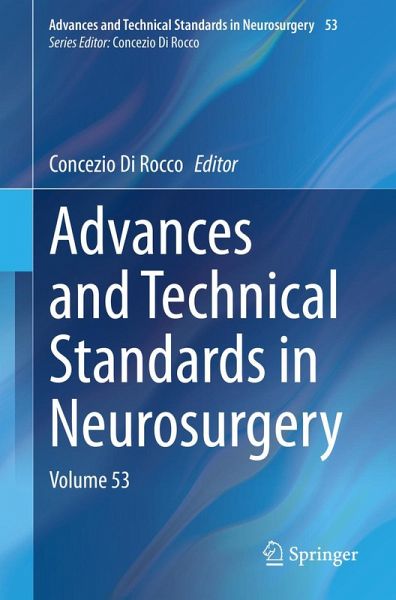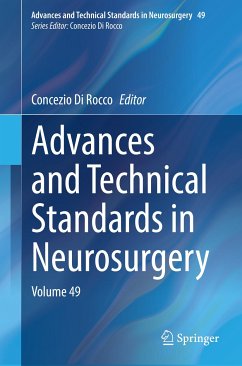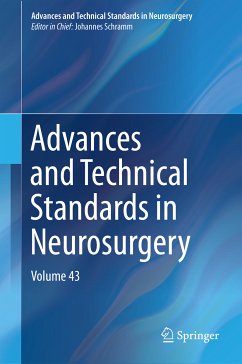
Advances and Technical Standards in Neurosurgery (eBook, PDF)
Volume 53
Redaktion: Di Rocco, Concezio
Versandkostenfrei!
Sofort per Download lieferbar
112,95 €
inkl. MwSt.
Weitere Ausgaben:

PAYBACK Punkte
56 °P sammeln!
This book presents a comprehensive update on some crucial aspects of brain and spinal tumoral pathology that strongly influence the current surgical management. It covers a range of topics, from the latest results of molecular diagnosis for tumors still considered unsuitable for surgical excision, to the increasing use of minimally invasive approaches made possible by the wide application of neuroendoscopic techniques.The first three chapters discuss basic research on the potential benefits of new, less invasive and more sophisticated techniques for brain exploration. The following four chapte...
This book presents a comprehensive update on some crucial aspects of brain and spinal tumoral pathology that strongly influence the current surgical management. It covers a range of topics, from the latest results of molecular diagnosis for tumors still considered unsuitable for surgical excision, to the increasing use of minimally invasive approaches made possible by the wide application of neuroendoscopic techniques.
The first three chapters discuss basic research on the potential benefits of new, less invasive and more sophisticated techniques for brain exploration. The following four chapters examine how modern instruments for intraoperative visualization are modifying the traditional paradigm of classical neurosurgery. Two chapters describe he recent understanding of two of the most relevant intracranial tumors that still pose challenges for successful treatment, namely the tumor of the pineal region and ependymomas. Two more chapters are devoted to the management of brain tumors, the first exploring the valuable information that can be derived from biopsy when properly carried out, and the second detailing an innovative therapeutic modality that increases the intratumoral level of antineoplastic agents while minimizing body toxicity and side effects. The book also delves into congenital or acquired malformations of the brain, the skull base, and the cranial vault in three of its remaining chapters. Finally, the last chapter addresses the traumatic pathology of the spine, whose etiology and management have changed significantly in recent years.
The first three chapters discuss basic research on the potential benefits of new, less invasive and more sophisticated techniques for brain exploration. The following four chapters examine how modern instruments for intraoperative visualization are modifying the traditional paradigm of classical neurosurgery. Two chapters describe he recent understanding of two of the most relevant intracranial tumors that still pose challenges for successful treatment, namely the tumor of the pineal region and ependymomas. Two more chapters are devoted to the management of brain tumors, the first exploring the valuable information that can be derived from biopsy when properly carried out, and the second detailing an innovative therapeutic modality that increases the intratumoral level of antineoplastic agents while minimizing body toxicity and side effects. The book also delves into congenital or acquired malformations of the brain, the skull base, and the cranial vault in three of its remaining chapters. Finally, the last chapter addresses the traumatic pathology of the spine, whose etiology and management have changed significantly in recent years.
Dieser Download kann aus rechtlichen Gründen nur mit Rechnungsadresse in A, B, BG, CY, CZ, D, DK, EW, E, FIN, F, GR, HR, H, IRL, I, LT, L, LR, M, NL, PL, P, R, S, SLO, SK ausgeliefert werden.












